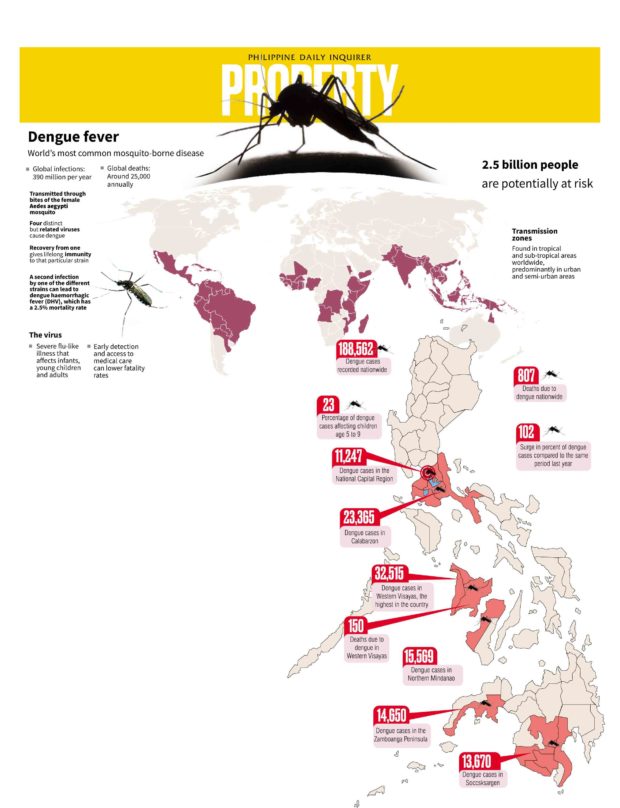
This mosquito-borne disease has become a leading cause of hospitalization and death in the Philippines especially among infants and young children. With a total of 188,562 dengue cases recorded nationwide including 807 deaths, as of August 3 this year, the Department of Health (DOH) declared a national dengue epidemic on Aug. 6.
Acknowledging that there is no specific treatment for dengue, the World Health Organization noted that the main intervention thus far would be prevention and control.
And it is in this regard that households will therefore play a crucial role in helping prevent dengue from further spreading.
Health Secretary Francisco T. Duque III even called on households to be prime dengue warriors, with a mission to destroy mosquito-breeding sites.
“The first step to prevent dengue is within our homes. It is important to remove any space or container than can hold unnecessary stagnant water which may become breeding sites of mosquitoes,” he said.
The DOH has its Enhanced 4S campaign which stands for Search and destroy mosquito-breeding sites; Secure self-protection; Seek early consultation; and Support fogging/spraying only in hotspot areas where increase in cases is registered for two consecutive weeks to prevent an impending outbreak.
Here are a few tips on how to remove mosquito breeding sites, according to the United States Environmental Protection Agency (EPA):
- Eliminate standing water in rain gutters, old tires, buckets, plastic covers, toys, or any other container where mosquitoes can breed;
- Drain or fill temporary pools of water with dirt; and
- Empty and change water in rain barrels and potted plant trays at least once a week to destroy potential mosquito habitats;
To protect yourself from dengue, you would have to avoid being bitten by mosquitoes. Here are a few simple measures you can do:
- Keep mosquitoes from exposed skin by wearing long-sleeved shirts, long pants, socks
- Tuck shirts in pants and pants in socks to cover gaps in your clothing where mosquitoes can get to your skin;
- Apply mosquito repellents regularly and follow directions and precautions closely;
- Stay indoors as much as possible, especially if there is a mosquito-borne disease warning in effect;
- Use head nets, long sleeves and long pants if you venture into areas with high mosquito populations like in swamps and forests; and
- Sleep under mosquito nets.
- You can also take measures to dengue-proof your home:
- Use mosquito coils, electric mosquito swatters, and if necessary, insecticides to control adult mosquitoes
- Use structural barriers like cover gaps in walls, doors, and windows to prevent mosquitoes from entering;
- Make sure window and door screens are in good working order (repair holes in screens) and completely cover baby carriers and beds with netting;
- Grow an herb garden (aside from citronella plant, other herbs such as garlic, lemongrass, basil, peppermint, onions and rosemary can also help detract mosquitoes);
- Turn on the electric fans;
- Decorate with citronella infused candles, lavender, peppermint and orange to repel insects;
- Replace your outdoor lights with yellow “bug” lights, which tend to attract fewer mosquitoes than ordinary lights. (The yellow lights are not repellents, however).
It is also important to read the news and learn about dengue cases in your area. Has your city or province been declared a dengue calamity area? Are there efforts in your subdivision, school or place of work to fog or spray against dengue?
Take time to help clean your place of work, study and community, especially the mosquito breeding areas. Learn about places where there is a dengue alert or warning—either you avoid these areas or wear protective clothing if you need to go to those places.
Source: Inquirer Archives, www.doh.gov. ph; www.epa.gov

